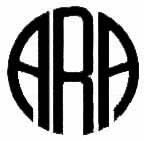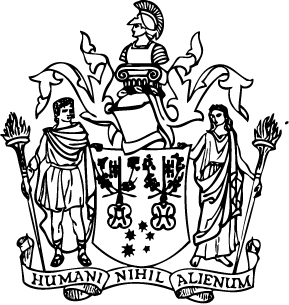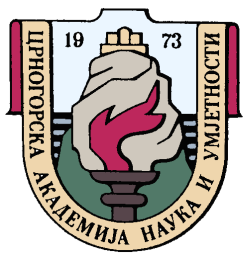 W
WThe American Romanian Academy of Arts and Sciences (ARA) is a scholarly organization dedicated to the analysis, study and dissemination of Romanian contributions and accomplishments. To enhance these efforts, ARA combines Western and Romanian intellectual traditions, encourages communications and serves as a point d'appui in the Western World for Romanian academics and intellectuals. ARA is duly incorporated in the State of California as a non-profit tax-exempt organization. It is organized in conformity with the pertinent laws and regulations of the state of California and the United States of America. ARA conducts and supports multidisciplinary studies in exact sciences, mathematics, natural sciences, and also supports the arts, linguistics, literature, political studies and sociology. As an institution its main goal is to foster cultural exchanges between the American and Romanian cultures. ARA was founded in California in 1975 by a group of American-Romanians, and in 2014 has 119 elected members, 81 corresponding members, and 59 honorary members.
 W
WThe Australian Academy of the Humanities was established by Royal Charter in 1969 to advance scholarship and public interest in the humanities in Australia. It operates as an independent not-for-profit organisation partly funded by the Australian government.
 W
WThe Academy of Sciences and Arts of Bosnia and Herzegovina is the national academy of Bosnia and Herzegovina. The Academy, based in the capital city of Sarajevo, is the leading non-university public research institution in the country. The institution was established in 1951, during the time when the PR Bosnia and Herzegovina was a constituent part of Yugoslavia, as the Scientific Society of Bosnia and Herzegovina and upgraded into the Academy of Sciences and Arts of Bosnia and Herzegovina in 1966.
 W
WThe Bosniak Academy of Sciences and Arts is an academic institution in Bosnia and Herzegovina. The institution is based in Sarajevo (BiH) and has divisions in both Sarajevo and Novi Pazar (Serbia) to better reflect Bosniak interests in Bosnia and Herzegovina and Sandžak.
 W
WThe British Academy is the United Kingdom's national academy for the humanities and the social sciences. It was established in 1902 and received its royal charter in the same year. It is now a fellowship of more than 1,000 leading scholars spanning all disciplines across the humanities and social sciences and a funding body for research projects across the United Kingdom. The academy is a self-governing and independent registered charity, based at 10–11 Carlton House Terrace in London.
 W
WThe Croatian Academy of Sciences and Arts is the national academy of Croatia.
 W
WThe Czech Academy of Sciences was established in 1992 by the Czech National Council as the Czech successor of the former Czechoslovak Academy of Sciences and its tradition goes back to the Royal Bohemian Society of Sciences and the Emperor Franz Joseph Czech Academy for Sciences, Literature and Arts. The Academy is the leading non-university public research institution in the Czech Republic. It conducts both fundamental and strategic applied research.
 W
WFounded in 1938, the Estonian Academy of Sciences is Estonia's national academy of science in Tallinn. As with other national academies, it is an independent group of well-known scientists whose stated aim is to promote research and development, encourage international scientific cooperation, and disseminate knowledge to the public. As of March 2017, it had 77 full members and 20 foreign members. Since 15 October 2014, the president of the Academy is the mathematician Tarmo Soomere.
 W
WThe Finnish Academy of Science and Letters is a Finnish learned society. It was founded in 1908 and is thus the second oldest academy in Finland. The oldest is the Finnish Society of Sciences and Letters, which was founded in 1838.
 W
WThe Georgian National Academy of Sciences (GNAS) is a main learned society of the Georgia. It was named Georgian SSR Academy of Sciences until November 1990. The Academy coordinates scientific research in Georgia and develops relationship with the academies and scientific centers of foreign countries.
 W
WThe Historical and Literary Society, a successor organisation to the Literary Society, was founded in Paris in 1832 as a Polish political and cultural association by a group that included Alexandre Walewski, Napoleon's natural son and future minister of foreign affairs of Napoleon III. Its founding chairman was Adam Jerzy Czartoryski and from 1861, his son, Wladyslaw Czartoryski. The society's original aim was "to collect and publicise materials relating to the former Kingdom of Poland, its current circumstances and future prospects, in the context of maintaining and encouraging in the opinion of nations the sympathy they have directed towards Poland.
 W
WThe Hungarian Academy of Sciences is the most important and prestigious learned society of Hungary. Its seat is at the bank of the Danube in Budapest, between Széchenyi rakpart and Akadémia utca. Its main responsibilities are the cultivation of science, dissemination of scientific findings, supporting research and development and representing Hungarian science domestically and around the world.
 W
WIsrael Academy of Sciences and Humanities, based in Jerusalem, was established in 1961 by the State of Israel to foster contact between Israeli scholars in the sciences and humanities and create a think tank for advising the government on research projects of national importance. Its members include many of Israel's most distinguished scholars.
 W
WThe Lalit Kala Akademi or National Academy of Art (LKA) is India's national academy of fine arts. It is an autonomous organisation, established in New Delhi in 1954 by Government of India to promote and propagate understanding of Indian art, in and outside the country.
 W
WThe Lithuanian Academy of Sciences or LMA is a state-funded independent organization in Lithuania dedicated for science and research. Its mission is to mobilize prominent scientists and initiate activities that would strengthen the welfare of Lithuania and contribute to the scientific, social, cultural and economic development of the country.
 W
WThe Macedonian Academy of Sciences and Arts is an important academic institution in North Macedonia.
 W
WMontenegrin Academy of Sciences and Arts is the most important scientific institution of Montenegro.
 W
WThe Nepal Academy, formerly Royal Nepal Academy, is an autonomous apex body in Nepal established for the promotion of the languages, literature, culture, philosophy and social sciences of Nepal. The academy commissions research and aims to promote the development of cultural and intellectual endeavour by coordinating national and international activities. The current chancellor of the academy is Mr. Ganga Prasad Upreti and Prof. Jagat Prasad Upadhyaya is the member secretary.
 W
WThe Royal Netherlands Academy of Arts and Sciences is an organization dedicated to the advancement of science and literature in the Netherlands. The academy is housed in the Trippenhuis in Amsterdam.
 W
WThe Norwegian Academy of Science and Letters is a learned society based in Oslo, Norway. Its purpose is to support the advancement of science and scholarship in Norway.
 W
WThe Polish Academy of Arts and Sciences or Polish Academy of Learning, headquartered in Kraków and founded in 1872, is one of two institutions in contemporary Poland having the nature of an academy of sciences.
 W
WThe Polish Academy of Sciences is a Polish state-sponsored institution of higher learning. Headquartered in Warsaw, it is responsible for spearheading the development of science across the country by a society of distinguished scholars and a network of research institutes. It was established in 1951, during the early period of the Polish People's Republic following World War II.
 W
WThe Pontifical Academy of Social Sciences was established on 1 January 1994 by Pope John Paul II and is headquartered in the Casina Pio IV in Vatican City. It operates much like other learned societies worldwide, but has the special task of entering into dialogue with the Church. Its scientific activities are organised and focused to promote this dialogue.
 W
WThe Lisbon Academy of Sciences is Portugal's national academy dedicated to the advancement of sciences and learning, with the goal of promoting academic progress and prosperity in Portugal. It is one of Portugal's most prestigious scientific authorities and the official regulator of the Portuguese language in Portugal, through its Class of Letters.
 W
WThe Romanian Academy is a cultural forum founded in Bucharest, Romania, in 1866. It covers the scientific, artistic and literary domains. The academy has 181 acting members who are elected for life.
 W
WThe Royal Flemish Academy of Belgium for Science and the Arts is one of an independent learned society of science and arts of the Flemish Community in Belgium. It is one of Belgium's numerous academies and traces its origin to 1772 when the Imperial and Royal Academy of Brussels was founded by empress Maria Theresia.
 W
WThe Royal Society of Edinburgh is Scotland's national academy of science and letters. It is a registered charity, operating on a wholly independent and non-party-political basis and providing public benefit throughout Scotland. It was established in 1783. As of 2021, there are around 1,600 Fellows.
 W
WThe Serbian Academy of Sciences and Arts is a national academy and the most prominent academic institution in Serbia, founded in 1841 as Society of Serbian Letters.
 W
WThe Slovenian Academy of Sciences and Arts is the national academy of Slovenia, which encompasses science and the arts and brings together the top Slovene researchers and artists as members of the academy.
 W
WThe Royal Spanish Academy is Spain's official royal institution with a mission to ensure the stability of the Spanish language. It is based in Madrid, Spain, and is affiliated with national language academies in 22 other hispanophone nations through the Association of Academies of the Spanish Language. The RAE's emblem is a fiery crucible, and its motto is Limpia, fija y da esplendor ..
 W
WThe Royal Swedish Academy of Fine Arts, commonly called the Royal Academy, is located in Stockholm, Sweden. An independent organization that promotes the development of painting, sculpture, architecture, and other fine arts, it is one of several Swedish Royal Academies. The Royal Institute of Art, an art school that was once an integral part of the Academy, was broken out in 1978 as an independent entity directly under the supervision of the Ministry of Education.
 W
WThe Royal Swedish Academy of Letters, History and Antiquities also called simply the Royal Academy of Letters or Vitterhetsakademin abbreviated KVHAA is the Swedish royal academy for the Humanities. Its many publications include the archaeological and art historical journal Fornvännen, published since 1906.
 W
WAcademia Sinica, headquartered in Nangang, Taipei, is the national academy of Taiwan. It supports research activities in a wide variety of disciplines, ranging from mathematical and physical sciences, to life sciences, and to humanities and social sciences. As an educational institute, it provides PhD training and scholarship through its English-language Taiwan International Graduate Program in biology, agriculture, chemistry, physics, informatics, and earth and environmental sciences. Academia Sinica is ranked 144th in Nature Publishing Index - 2014 Global Top 200 and 18th in Reuters World's Most Innovative Research Institutions of 2019. The current president since 2016 is James C. Liao, an expert in metabolic engineering, systems biology and synthetic biology.
 W
WAcademy of Sciences of the Republic of Tajikistan incorporates 20 research institutes and three territorial groupings: the Pamir Branch in the eastern part of the country, the Khujand Scientific Center in the north, and the Khatlon Scientific Center in the south-west. The Academy is organized in three thematic divisions: physico-mathematical, chemical, and geological sciences; biological and medical sciences; humanities and social sciences. The incumbent president is Academician M.I. Ilolov, elected in 2005.
 W
WNational Ukrainian Academy of Arts is a state scientific and artistic institution in the field of art, culture, and art history in Ukraine. The academy is one of the six state funded institutions along with the National Academy of Sciences of Ukraine that was established in 1996 and obtained its National status in 2010. The membership to the academy is on an electoral basis for the distinguished specialists of professional artistry: theater and film directors, composers, painters, conductors, actors etc.
 W
WThe Union Académique Internationale (UAI)—in English, International Union of Academies—is a federation of many national academies and international academies from more than 60 countries all over the world which works in the field of Humanities and Social Sciences.
 W
WThe Young Academy of Scotland is a Scottish organization of young people from the sciences humanities, professions, arts, business and civil society. It was established by the Royal Society of Edinburgh in 2011.